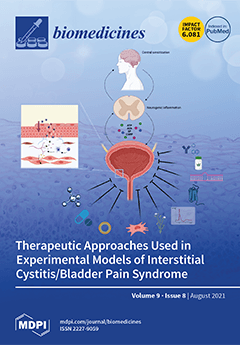African trypanosomiasis or sleeping sickness is a zoonotic disease caused by
Trypanosoma brucei, a protozoan parasite transmitted by
Glossina spp. (tsetse fly). Parasite introduction into mammal hosts triggers a succession of events, involving both innate and adaptive immunity. Macrophages (MΦ) have a
[...] Read more.
African trypanosomiasis or sleeping sickness is a zoonotic disease caused by
Trypanosoma brucei, a protozoan parasite transmitted by
Glossina spp. (tsetse fly). Parasite introduction into mammal hosts triggers a succession of events, involving both innate and adaptive immunity. Macrophages (MΦ) have a key role in innate defence since they are antigen-presenting cells and have a microbicidal function essential for trypanosome clearance. Adaptive immune defence is carried out by lymphocytes, especially by T cells that promote an integrated immune response. Like mammal cells,
T. b. brucei parasites release extracellular vesicles (TbEVs), which carry macromolecules that can be transferred to host cells, transmitting biological information able to manipulate cell immune response. However, the exact role of TbEVs in host immune response remains poorly understood. Thus, the current study examined the effect elicited by TbEVs on MΦ and T lymphocytes. A combined approach of microscopy, nanoparticle tracking analysis, multiparametric flow cytometry, colourimetric assays and detailed statistical analyses were used to evaluate the influence of TbEVs in mouse mononuclear cells. It was shown that TbEVs can establish direct communication with cells of innate and adaptative immunity. TbEVs induce the differentiation of both M1- and M2-MΦ and elicit the expansion of MHCI
+, MHCII
+ and MHCI
+MHCII
+ MΦ subpopulations. In T lymphocytes, TbEVs drive the overexpression of cell-surface CD3 and the nuclear factor FoxP3, which lead to the differentiation of regulatory CD4
+ and CD8
+ T cells. Moreover, this study indicates that
T. b. brucei and TbEVs seem to display opposite but complementary effects in the host, establishing a balance between parasite growth and controlled immune response, at least during the early phase of infection.
Full article






